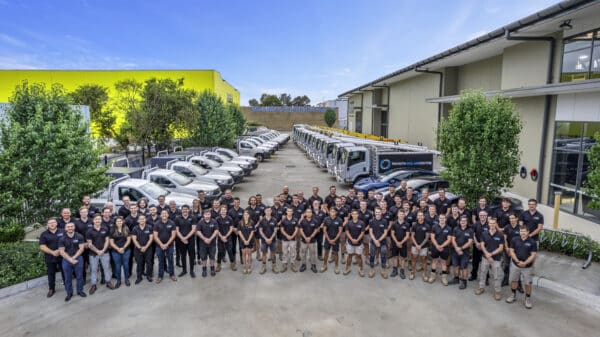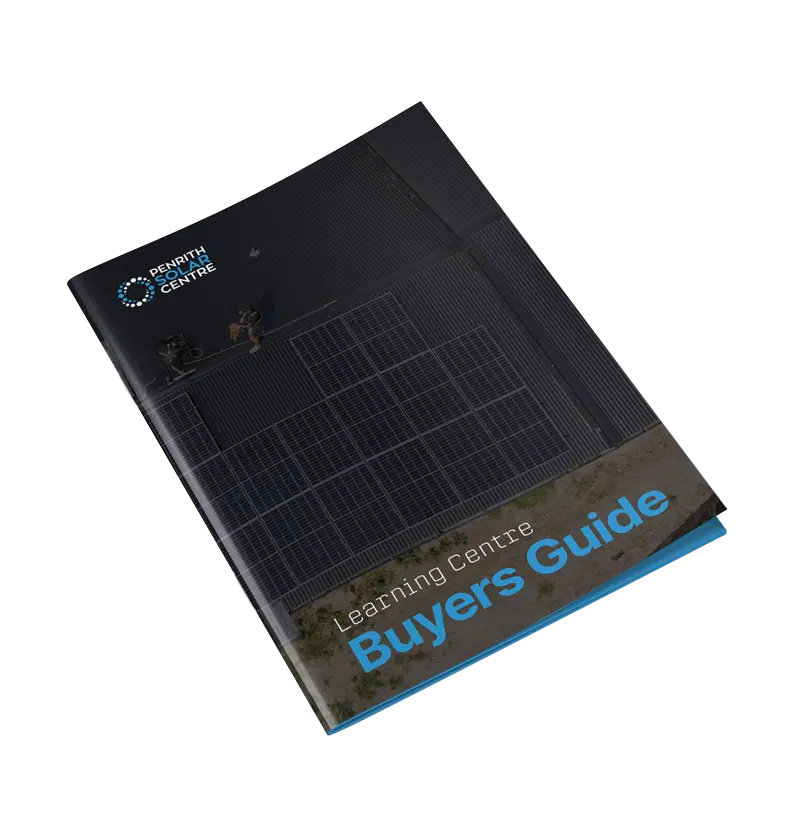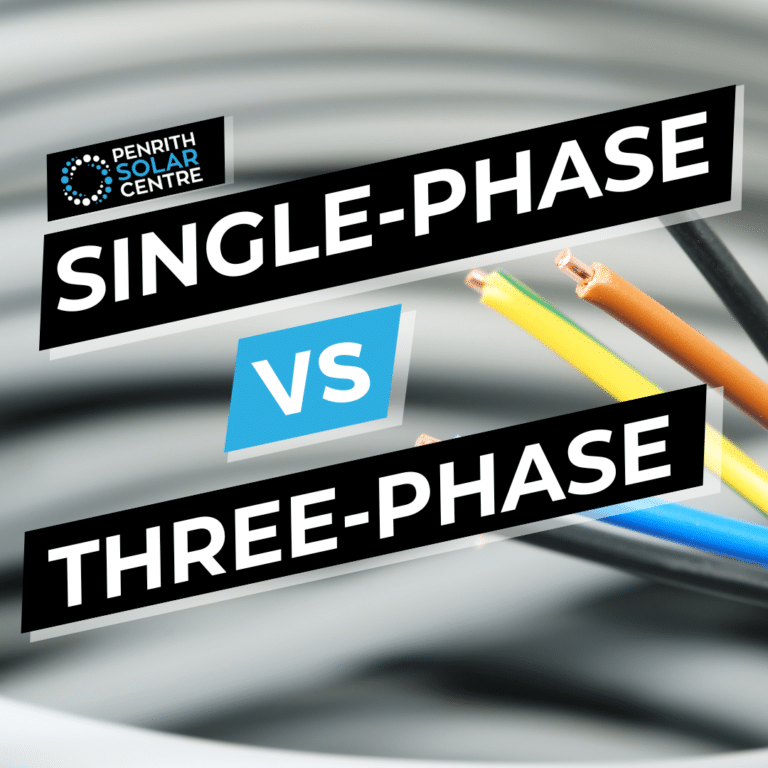
Are you a homeowner in New South Wales looking to save on energy costs? The new battery rebate program might be just what you need.
The NSW government has introduced this initiative to help residents afford solar battery systems. This is awesome because the upfront cost of adding a solar battery to your system is substantial, but it’s difficult to reduce your energy bills to nothing without one.
Offering an incentive for solar batteries is something everyone (from manufacturers to installers to customers) has wanted for some time.
At Penrith Solar Centre, we’ve seen a few things come and go in the solar industry. With years of experience in renewable energy, our team will guide you through these requirements.
In this article, you will learn:
- What is the Home Battery Rebate for NSW?
- Are You Eligible for the Government Solar Battery Rebate in NSW?
- What are the Battery Equipment Requirements?
- What Are the VPP Rebate Requirements?
- How to Apply for the Home Battery Rebate NSW
Let’s dive into it.
What is the Home Battery Rebate for NSW?
The new Home Battery Rebate for NSW is a financial incentive from the government to encourage folks to purchase solar batteries. We need to adopt renewables and move away from burning fossil fuels, and this rebate scheme is encouraging everyone to do so.
The incentive began on 1 November 2024. It’s called the Peak Demand Reduction Scheme.
If you are eligible, you could save as much as:
- Between $1,600 – $4,000 off the upfront cost of a solar battery, but you must have solar already installed or purchase your solar with a battery. It needs to be a new battery installation.
- Between $250 – $400 rebate is available for connecting your battery to a virtual power plant (VPP). Battery owners can receive this rebate twice in their battery’s lifespan with a minimum of 3 years between applications. There must be at least 6 years remaining on the battery’s warranty.
If you don’t have solar already installed: the incentive can be priced into the quote from a certified installer. Much like the rebate for solar (STC scheme), the discount is applied immediately off the upfront cost by your installer.
How It Works:
When you install a battery that helps reduce or shift energy use during peak times, it earns what’s called a Peak Demand Reduction Certificate (PRC).
For every 0.1 kW of energy saved during peak hours, you earn one PRC. These certificates can then be sold to energy retailers. Those retailers need to buy these certificates to meet their yearly environmental obligations.
Essentially, the more energy your battery helps save, the more PRCs you can generate, and the more valuable your battery becomes over time.
The rebate incentive is not given to you directly. Instead, it’s applied as an upfront discount by Penrith Solar Centre.
If you’re interested in learning a bit more about solar batteries, you might want to start with the following article titled, Adding a Battery to a Solar System.
Ready to go solar? Let’s get started
Are You Eligible for the Government Solar Battery Rebate in NSW?
Under the new scheme, you can earn PRCs if you install batteries in the following ways:
- Installing a brand-new battery at your home, even if it’s not connected to a Virtual Power Plant (VPP).
- Installing a new battery that is connected to a VPP.
- Connecting an already installed battery to a VPP for the first time.
The focus here is on creating more battery storage at new locations. While that might feel a bit unfair to early adopters with ineligible batteries, the goal of the scheme is to encourage more homes and businesses to get onboard with battery storage, helping the grid reduce peak energy demand.
To qualify for the battery rebate, new battery installations must meet these requirements:
- Only customers who already have a solar system or are installing one can apply.
- The property must not currently have a battery installed, and eligibility for each address is determined by the National Meter Identifier (NMI).
- The battery needs to be on an approved product list (still pending).
- Eligible batteries must have a capacity between 2kWh and 28kWh.
- The battery must be able to connect to a Virtual Power Plant (VPP).
- There must be at least 6 years left on the battery’s warranty to collect the VPP rebate.
NSW has announced that customers could potentially save up to $2,400 off the upfront cost and get as much as $400 as a cash back incentive for connecting to a VPP. VPP customers with a battery are eligible for this rebate again after three years.
If you’re interested in learning about types of solar batteries, you might want to check out the following article titled, AC-coupled Battery vs. DC-coupled Solar Batteries.
What are the Battery Equipment Requirements?
- The equipment must be on the approved product list. This is created and maintained by the Clean Energy Council (CEC).
- It must have a usable storage capacity between 2 kWh and 28 kWh, as recorded on the approved list.
- The equipment must be internet-connectable and controllable so you can program your system.
- It must have a 10-year warranty guaranteeing at least 70% usable capacity retention after 10 years.
- The warranty must define normal use conditions, including:
- A minimum ambient temperature range of -10°C to 50°C.
- A minimum warranted throughput of 3.65 MWh per kWh of usable battery capacity.
If you’re interested in comparing the two leading residential solar batteries, you might want to check out the following article titled, Enphase IQ Battery 5P vs Tesla Powerwall 2: Which is Right for You?
The information about the rebate is on pages 30 – 31:
What Are the VPP Rebate Requirements?
- The equipment must be on the approved product list.
- It must have a usable battery capacity between 2 kWh and 28 kWh.
- The equipment must have at least 6 years remaining on its warranty.
- The warranty must specify normal use conditions, including:
- A minimum ambient temperature range of -10°C to 50°C.
- A minimum warranted throughput of 3.65 MWh per kWh of usable battery capacity.
- Participation in the activity must not void or reduce the warranty below a guarantee of at least 70% usable capacity retention after 10 years from the installation date.
If you’re interested in learning a bit more about VPPs, you might want to check out the following article titled, What is a Virtual Power Plant (VPP)?
How to Apply for the Home Battery Rebate NSW
Applying for battery rebates is usually straightforward:
Research: Find out what rebates are available in your area. Check the NSW Government’s Energy Saver website for details.
Get Quotes: Contact certified installers for quotes. Make sure they are approved by the rebate program.
Install Your System with a Battery: Proceed with installation by a certified installer.
We Take Over: Much like the STC scheme (solar rebate), your certified installer takes the rebate off the cost of the system upfront and organises reimbursement after you’re all taken care of.
If you’re interested in learning about the rebate for solar, you might want to check out the following article titled, How Does the Solar Rebate Work?
Home Battery Rebate: Battery Late Than Never
Now you have some general points about the solar battery rebate in New South Wales. There will be eligibility requirements for individuals and equipment, but this is sensational news for solar in NSW.
At Penrith Solar Centre, we’re here to help you through the big choices as you embrace a renewable lifestyle and take control of your energy. A solar battery makes getting your energy bills to zero a reality.

If you’re interested in learning how you can turn your solar battery into a source of passive income, you might want to check out the following article titled, Variable Feed-in Rates and VPPs in NSW.










